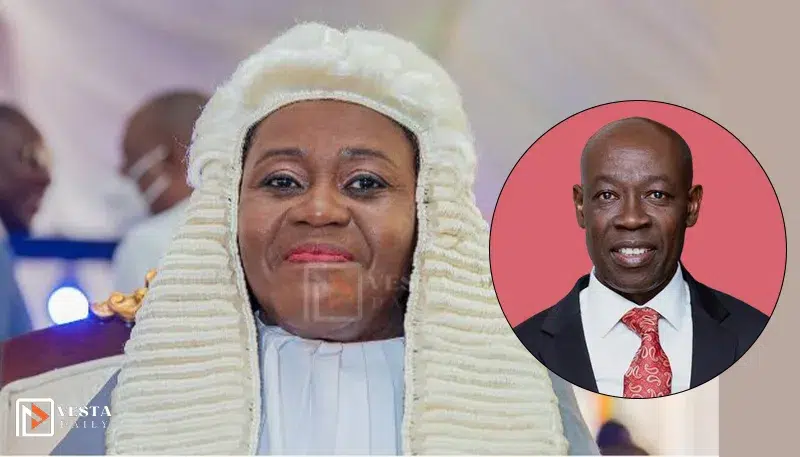The Constitutional Debate: Examining the Supreme Court Challenge Against the President
On the evening of Tuesday, March 25, 2025, social media reports revealed that President John Mahama had forwarded three petitions seeking the removal of the Chief Justice to the Council of State. This move, in line with Article 146(6) of the 1992 Constitution, has now been challenged in the Supreme Court. But does the President’s action violate constitutional protocols?
The Legal Dispute: Assafuah Takes Action
Who is Vincent Ekow Assafuah?
Two days after the petitions were submitted, on Thursday, March 27, 2025, at 9:20 AM, Vincent Ekow Assafuah from Old Tafo, Kumasi, filed an action at the Supreme Court. He argues that President Mahama’s referral process did not comply with constitutional provisions.
What Does the Constitution Say?
Article 146(6) of the 1992 Constitution states:
“Where the petition is for the removal of the Chief Justice, the President shall, acting in consultation with the Council of State, appoint a committee consisting of two Justices of the Supreme Court, one of whom shall be appointed Chairman by the President, and three other persons who are not members of the Council of State, nor members of Parliament, nor lawyers.”
However, Assafuah contends that the President should have first notified the Chief Justice and obtained her response before seeking the Council of State’s consultation, citing Articles 146(1), (2), (4), (6) and (7), 23, 57(3), and 296.
Key Questions Arising
Assafuah’s challenge raises several important questions:
- How did Assafuah determine within just one day that the Chief Justice was not consulted?
- Did the Chief Justice herself confirm this?
- Is there any official media report or evidence to support this claim?
Moreover, the appointment of Godfred Dame as Assafuah’s lawyer adds another layer to the case, fueling speculation about the underlying motivations behind this legal action.
The Constitution and the Role of the Council of State
What Does Article 146(6) Require?
The Constitution is clear: when it comes to the removal of the Chief Justice, the President must act in consultation with the Council of State. The provision does not explicitly require the Chief Justice’s comments before this step.
Precedent: Agyei Twum v. Attorney General & Akwetey
In Agyei Twum v. Attorney General & Akwetey, the Supreme Court held that a prima facie case must be established before a committee is appointed to investigate a petition. However, the ruling did not specify the procedure for making this determination.
Thus, referring the petitions to the Council of State appears to align with constitutional provisions rather than contradict them.
Debunking the Claims: Much Ado About Nothing?
This lawsuit raises some fundamental questions:
- If the Constitution mandates the President to act in consultation with the Council of State, is it unconstitutional for him to do so?
- Is the referral of petitions not the first logical step in determining whether a prima facie case exists?
- Should the President make this determination alone, without consulting the Council of State?
- Does referring the matter to the Council of State preclude the Chief Justice from presenting her side later?
Clearly, the lawsuit lacks strong constitutional grounding and appears to be politically motivated.
Trusting the Legal Process
The Chief Justice is bound by the law, and so is the President. The ongoing consultation with the Council of State follows constitutional requirements. The legal community and the public must allow the process to unfold rather than rush to conclusions.
A Biblical Perspective: Lessons from Acts 5
Drawing wisdom from Acts 5, the Apostle Peter and his followers faced attempts to silence their mission. Gamaliel, a respected Pharisee, advised:
“Refrain from these men, and let them alone: for if this counsel or this work be of men, it will come to nought: But if it be of God, ye cannot overthrow it.” (Acts 5:38-39)
To Vincent Ekow Assafuah and his backers—if this lawsuit lacks merit, it will collapse. But if the case has constitutional standing, no opposition will stop it.
Conclusion: Let the Process Take Its Course
Rather than jumping to legal action, stakeholders should allow constitutional processes to unfold. The Council of State, comprising legal experts, is more than capable of guiding the next steps.



